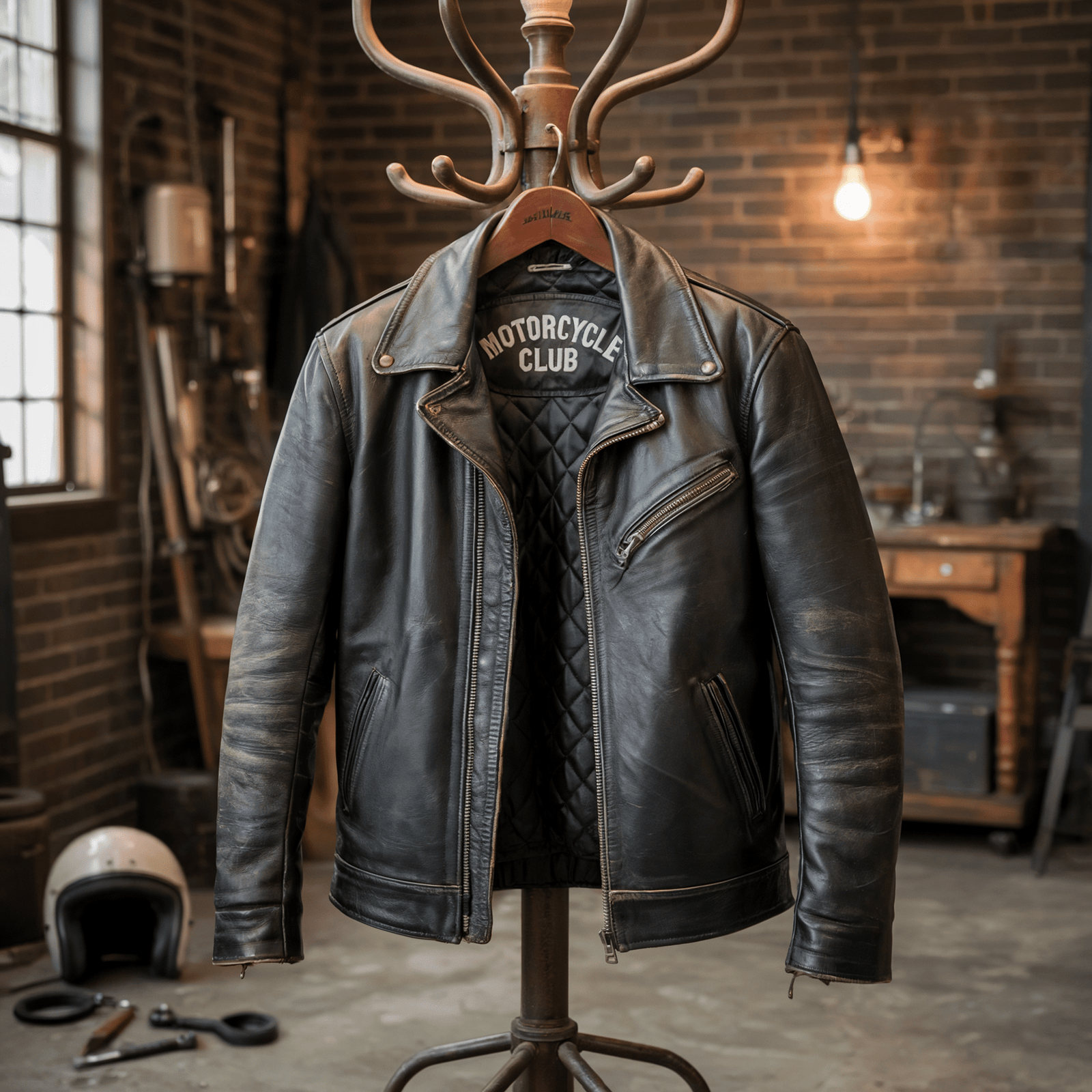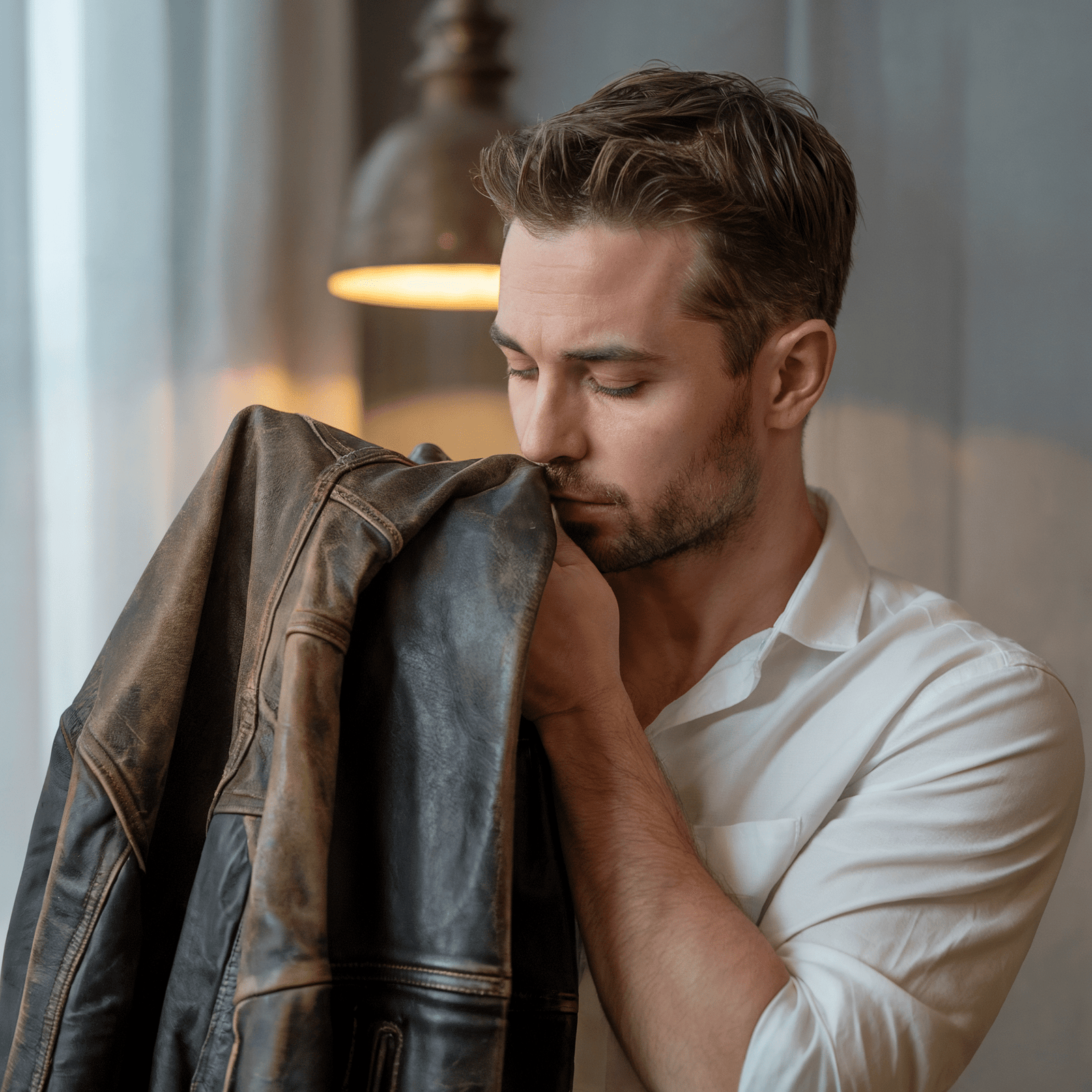Your Cart is Empty
BLACK FRIDAY SALE $25 OFF - USE COUPON BFRIDAY25 AT CHECKOUT NOW!
Menu

BLACK FRIDAY SALE $25 OFF - USE COUPON BFRIDAY25 AT CHECKOUT NOW!

Different Types of Lining Material Used for Leather Jackets
by Jennifer Smith October 06, 2021 7 min read
Key takeaways:
- The lining of a leather jacket significantly impacts its comfort and durability
- There's a wide range of lining materials available, each with unique properties
- Customization allows you to choose the lining that best suits your needs and preferences.
When choosing a leather jacket, style, leather type, and comfort are often the top priorities. However, the lining is just as important. The right lining provides warmth, comfort, and durability while giving the jacket structure to drape perfectly on your body. It’s also a strong indicator of the jacket’s overall quality, making it essential to check the lining before making your purchase.
What is Leather Jacket Lining?
Leather jacket lining is the inner layer of fabric that is sewn inside a leather jacket. It creates a smooth surface against your body and clothing, adding to the comfort and endurance of the jacket. The material of the lining makes the jacket more comfortable to wear, as the leather itself can feel stiff or rough. While the lining is sewn in, some jackets also have a removable lining that you can take out or replace if needed.
Why to Get Leather Jackets Lined?
There are several reasons to get leather jackets lined:
- The inner lining of the leather jacket serves the purpose of insulation. Depending on the type of lining used, your jacket will provide you with the desired level of warmth.
- Lining protects both you and the leather. Your skin is protected from rough leather edges, and the leather is protected from sweat and body oils, reducing damage from regular use.
- Helps maintain the structure of the jacket, giving it a more finished appearance.
- Makes the jacket easier to put on and take off.
- Some linings can help with moisture-wicking and breathability in warmer conditions.
- Properly lined jackets typically last longer.
- Creates pockets and storage spaces inside the jacket
- Can provide extra features like wind resistance or waterproofing
- Above all, it’s easier to repair or replace a damaged lining than to fix damaged leather.
Different Types of Leather Lining Materials
Here is a quick breakdown of the various types of lining materials used in leather jackets:
POLYESTER
Polyester, a durable synthetic fabric, is a common choice for lining leather jackets. Not only it is durable and lightweight (making it appropriate for spring and summer jackets), polyester is affordable and easy to maintain. It’s available in varying qualities, so make sure the quality of polyester is good when choosing it for your jacket lining.
Quilted Polyester lining is a popular choice for leather jackets and adds a bit of insulation and visual appeal. Jackets with quilted polyester lining can provide adequate warmth in winter.
COTTON
Natural cotton is known for its breathability, soft touch, and durability, making it one of the most sought-after choices for leather jacket lining. Cotton-lined jackets are good for summers when insulation isn’t needed. The downside of cotton lining is that it wrinkles easily, and also shrinks if it gets wet, which could deform the structure of your leather jacket.
POLY-COTTON
It’s a blend of natural and synthetic fibers of cotton and polyester, combining the durability and ease of care of polyester with the softness and breathability of cotton. The poly-cotton lining offers a good balance of comfort and practicality.
NYLON
Nylon is one of the sturdiest synthetic options for lining leather jackets. It is lightweight and water-resistant. Although nylon is not breathable, it doesn’t cling to clothing and feels slippery against the skin, making it easy to put your jacket on or take it off.
SATIN
The satin lining is smooth and highly durable with a luxurious feel. The fabric is not as warm as other options. The silky touch of satin makes the jacket easier to slip on and off, and you can easily wear it over an extra layer.
VISCOSE
Viscose, also known as artificial silk, is a soft and breathable material that drapes well. Although viscose is thin and feels delicate, it has good endurance. The moisture wicking properties and affordability of viscose lining are an added plus.
SILK
The silk lining is very soft, smooth, and breathable, ideal for lightweight summer jackets. However, real silk is quite expensive and requires careful maintenance to ensure it lasts long.
MESH
Sometimes, leather jackets are lined with lightweight and highly breathable mesh. Mesh-lined jackets do not provide insulation and can feel a bit airy due to the closely spaced holes. However, mesh lining is one of the best options to give structure to summer leather jackets while still keeping them cool.
TAFFETA
Another popular lining material for leather jackets is taffeta, a crisp, smooth fabric with a slight luster. Often being used for luxury garments like high end leather jackets, taffeta adds a touch of elegance with its crisp feel.
WOOL BLEND
Your primary choice for lining that feels comfortable and has good insulation properties. However, wool lining can be prone to shrinkage and is not as easy to clean as other synthetic options.
SHEARLING
shearling lining is made from sheepskin leather where the wool has been left intact, creating a soft, fuzzy interior. It is incredibly luxurious and provides excellent insulation. While you would love it for the tactile experience and coziness, shearling attracts dust and requires special care.
SHERPA FABRIC
Also known as faux shearling, Sherpa is a type of synthetic fabric that mimics the look and feel of sheepskin. It is very soft and fuzzy, and a good option for jackets intended for a casual, comfortable feel during fall and winter.
FLEECE
Synthetic fleece is created by tightly weaving polyester fibers and brushing them to produce a thick, soft fabric. It is lightweight and breathable, but warm. Fleece-lined leather jackets are highly popular.
FAUX FUR LINING
As the name suggests, faux fur is a synthetic fabric mimicking real fur. Some faux furs can feel very realistic. Many customers love faux fur lining due to the soft, plush feel against their skin. The material is great for insulation.
The infographic below highlights the key features and benefits of different types of lining materials, making it easier to choose the suitable lining for your needs.

How Lining Affects Comfort and Style
How comfortable and stylish your leather jacket would be doesn’t only depend on the outer shell material. The type of lining used decides the level of warmth and comfort the jacket will provide, plus the kind of drape the jacket will have for a flawless look.
Warm linings like shearling, fleece, and wool blends are perfect for colder climates, while breathable options such as cotton or viscose work well in warmer weather. Natural fibers allow better airflow, keeping you cool, while synthetic materials like nylon lining may trap heat, making them less ideal for hot conditions.
From a style perspective, the lining creates the jacket’s aesthetic. Bold, visible linings add personality with pops of color or patterns, while subtle options like satin maintain a timeless look.
Choose Leather Jacket Liner According to Your Needs
When you buy a ready-to-wear leather jacket, the odds of your jacket’s lining to be the one you desire are less. That’s why customizing a leather jacket is a great option. You can choose lining material to match your lifestyle and needs.
For spring jackets, cotton or taffeta lining offers light warmth and breathability. Leather jackets with polycotton lining are appropriate for summer, as the material keeps you cool. Fall requires wool blends or light sherpa for extra warmth without bulk. In winter, thick sherpa is ideal for staying warm while keeping the jacket lightweight.
When deciding on a custom jacket's lining, think about your wearing patterns throughout the year. If it’s a year-round staple requiring versatile lining like plain black polyester or medium-weight wool blend lining.
Caring for your Leather Jacket Lining
For minor stains on the jacket lining, you can spot clean with mild soap. For heavily soiled or delicate linings, consult a professional cleaner, as you cannot wash your leatherwear.
Relining is another option for worn or damaged linings. Always rely on expert leather repair services like Leather Skin Shop for major cleaning or relining to preserve the jacket’s quality and extend its lifespan.
Leather Jacket Lining Customization:
Leather Skin Shop, one of the best leather jacket manufacturers, allows customers to choose from a range of customization options, including plain or quilted lining fabric of several types. You can also order:
- Printed Linings: You can express yourself with custom designs and unique prints.
- Removable Linings: For versatility, you can opt for a removable lining. This allows you to adapt to changing weather conditions and style preferences.
FAQs
How do I choose the best color for the lining?
To choose the lining color, consider your style. A contrasting color can add a pop, while a neutral tone keeps it classic.
What kinds of lining are typically used in leather jackets?
Common options for leather jacket linings include polyester, cotton, satin, viscose, and fur (real or faux).
Will a leather jacket with lining stretch as usual?
The lining might slightly restrict the leather's natural stretch, but it shouldn't significantly impact its overall flexibility.
Why should I opt for a lined leather jacket?
Linings provide insulation, making the jacket more comfortable in colder weather. Plus, it protects the leather from abrasion and wear and tear. Also, linings can make the jacket feel softer against the skin.
Can a leather jacket be lined after purchase?
Yes, a professional leather tailor can reline a leather jacket.
Is a leather jacket without lining a good option?
No, unlined jackets are not as structured, easy to wear, and durable and lined leather jackets.
Can the lining of a leather jacket be replaced?
Yes, getting the old lining replaced with new lining is possible and can refresh an older jacket or correct any lining issues.
Does the lining of a leather jacket enhance its warmth?
Yes! Linings, especially those made from fur, fleece, or wool blends, significantly increase the jacket's warmth and insulation.
Takeaway: Leather Jacket Lining Matters
As we have discussed, the comfort, warmth, and durability of the jacket depend on the type of lining material used. It’s great that customization allows you to state the choice of lining, so that your leather jacket can truly become a one-of-a-kind piece that gives you the desired level of warmth, and comfort, and completely reflects your individuality.
Leave a comment
Comments will be approved before showing up.
Also in Blog | Leather Skin Shop

Types of Sleeves in a Leather Jacket
by Jennifer Smith August 24, 2025 6 min read
The different types of sleeves shape the shoulder, control the movement, and change how the leather jacket looks in motion. There are various types of sleeves, such as cap sleeves, bell sleeves, raglan sleeves, and more.

How to Get Smell Out of Leather Jacket?
by Jennifer Smith August 08, 2025 4 min read
Over time, a leather jacket can smell like sweat, mildew, or smoke. But do not worry, there are safe, proven ways to get rid of those unpleasant smells at home.

What Is A Trench Coat
by Jennifer Smith August 02, 2025 6 min read
A trench coat is a long, lightweight outerwear piece designed to protect against wind and rain. Its defining features include a double-breasted front, a belted waist, wide lapels, and often epaulets and a storm flap.
Leather Jackets for Men
Leather Jackets for Women
Accessories for Men & Women
Recent Articles
- Types of Sleeves in a Leather Jacket
- How to Get Smell Out of Leather Jacket?
- What Is A Trench Coat
- What Is A Peacoat Jacket?
- What is Polyester Fabric?
- What is Satin Fabric?
- What is Shearling Leather?
- Varsity Jacket Or Letterman Jacket? Everything You Need To Know Before Buying
- What is Semi Aniline Leather?
- What Is Cotton Fabric?
Size Chart
